Get More From Your Garden by Mixing Things Up
Can you mix formal with informal in garden design? Absolutely. You see it all the time in gardens, especially small gardens, where defined formal hardscape is softened by fluid, informal planting.
Most gardens until the early part of the last century were planted in a very formal manner, especially in municipal gardens and parks where seasonal bedding plants were used to fill in borders in a regimented manner. William Robinson, the famous Irish gardener who championed more naturalistic gardening, proclaimed, "It is only where the plants of a garden are rigidly set out in geometric design, as in carpet-bedding and bedding-out, that the term 'formal' is rightly applied."
This was changed dramatically in the Edwardian era in England by the two giants of garden design: the plantswoman Gertrude Jekyll and the architect Edwin Lutyens, who could see the benefits of mixing informal with the formal in garden design.
Lutyens, a young architect who designed the Cenotaph in London and the Viceroy's House in New Delhi, India, had great skill in creating the skeleton of gardens around houses he designed, but he turned to the aging Jekyll, who had an amazing understanding of not only using the right plant in the right place but of creating planting schemes to complement his hard landscape structure.
The use of this complementary design style, formal with the informal, has almost become the norm in garden design and the staple diet of contemporary designers in show gardens.
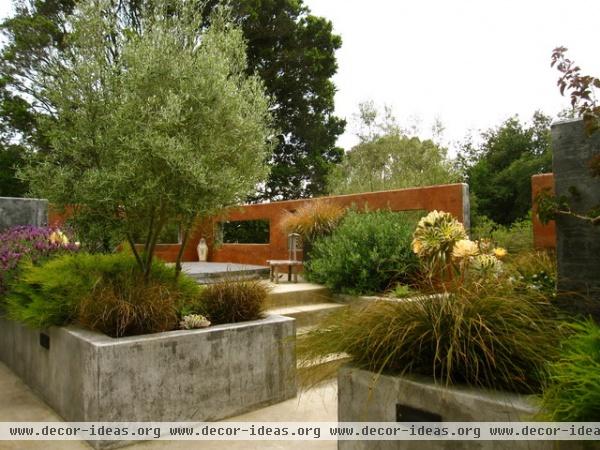
These severe concrete raised planters could dominate the garden, but the clever use of the informal mixed planting not only softens them, it also balances them.
Gertrude Jekyll had many simple rules, including ensuring that the plants fit their settings, but, perhaps most importantly, never forgetting that the hardscaping should be enhanced and not obscured by any planting.
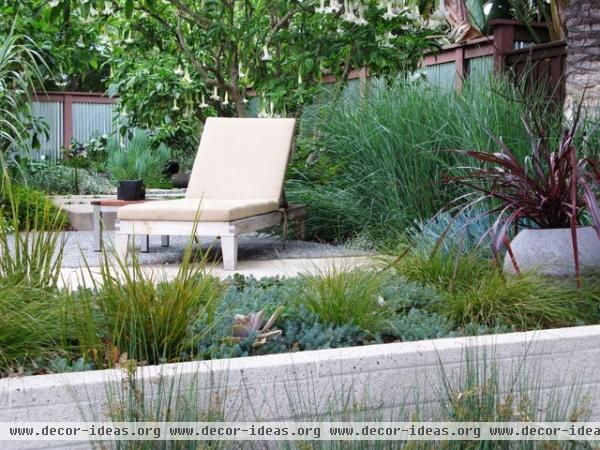
Here again we can see how the balance between formal hard landscape and the soft planting has been achieved, with neither overriding the other.
The gardens of Jekyll and Lutyens were geometric in layout but arranged with deliberate asymmetry — the planting being generally irregular, as we can see in this modern scheme.
The large Angel's Trumpet (Brugmansia x candida 'Double White') is central to the design, but doesn't overpower it.
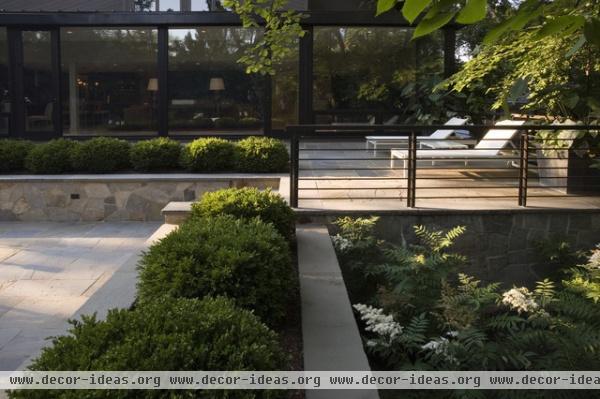
Informal planting doesn't always have to override formal planting in a contemporary garden. The loosely-clipped boxwood balls shown here create a rhythm of planting that echoes the straight lines of the retaining walls and paving. The patches of looser, informal planting break it up somewhat.
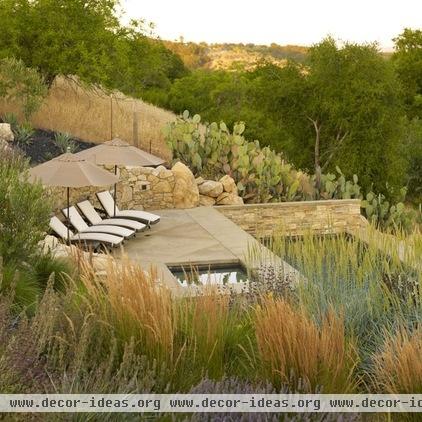
Lutyens believed strongly that there is no free curve in nature — "every line obeying the laws and forces which produce it." It was the result of these convictions that produced the strong geometry his schemes exhibited.
This modern hillside garden displays all the simple geometric shapes so loved by Lutyens — the squares and oblongs linked in a pleasing format.
The clever trick with the design, though, is how the free-flowing planting not only softens the hard landscaping, but draws it into the surrounding natural landscape.
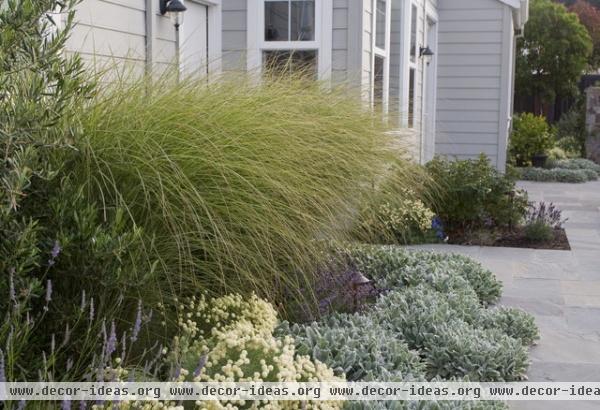
House entrances and immediate areas adjacent to the house generally tend to be very formal to allow easy access. Both Jekyll and Lutyens believed in a quiet introduction to the house with no flamboyance.
Planting in relation to these formal areas can be very traditional, with low boxwood hedging or other clipped evergreens, such as cotoneaster or pyracantha, accentuating the junction between paving and building. By using less formal planting, the link between the two is softened and neither the planting nor the paving overpowers the other.
The planting here is a lovely mix of the tall grass Miscanthus sinensis 'Morning Light' with lower ground cover plants, including Santolina pinnata, Stachys lanata and English lavender blurring the path edges.
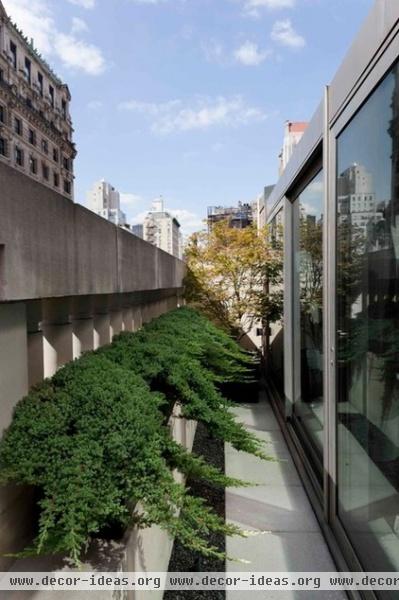
Whether or not you consider this to be garden design, it is without a doubt clever landscaping.
The horizontal growing Junipers, left to their own devices, create an informal break among the strong formal lines of the retaining walls.
More garden weepers and creepers
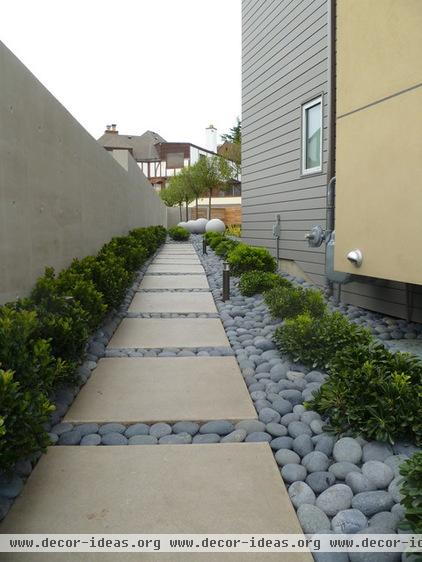
In this example of very strict, formal hardscaping, a geometric run of pavers are set in a sea of gray river stones. We might expect to see a line of formally clipped evergreens leading the eye to the spheres and trees at the end of the path, but instead the planting is loose and informal, being allowed to grow loosely over the cobbles.
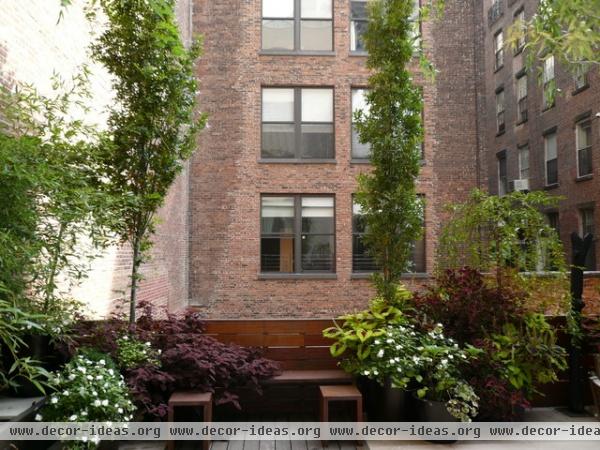
Even in the most modern of roof gardens you can find the formal informal conjunction. Beneath the container planting is a very simple, formal design, that without the informality of that planting would make a very sterile area.
In most contemporary roof and balcony gardens, you tend to find very regimented planting in a minimalistic design — rows of repetitive planting in identical containers. This is, in most cases, the designer wishing to take account of the relationship of the house with garden.
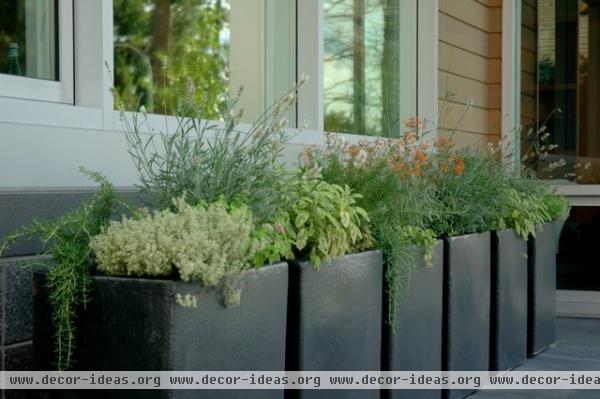
Repetitive lines of containers in gardens are usually planted in a very formal way, with clipped evergreens being the favorite.
Here, though, the overall formality is broken by the clever use of mixing different herbs — rosemary, sage, thyme, oregano, etc. — in an irregular, informal planting. Not only is it decorative, but it also is the perfect spot for a herb garden, just outside the kitchen door.
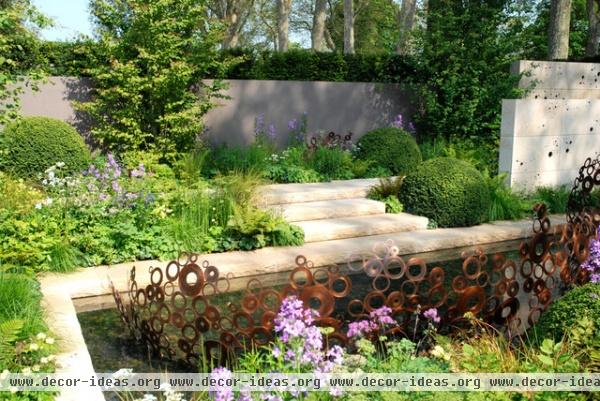
In a tribute to Jekyll, Lutyens said "the true adornment of a garden lies surely in its flowers and plants. No artist has so wide a palette as the garden designer, no artist has great need of discretion and reserve."
Today's generation of landscape designers are also artists in their use of informal planting. Andy Sturgeon's M&G Investments Garden at the 2012 Chelsea Flower Show was a perfect example of the return to this juxtaposition of formal and informal in the creation of the "new English" style.












